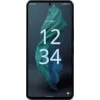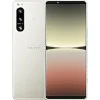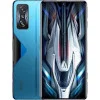Qualcomm Snapdragon 8 Gen 1

Qualcomm Snapdragon 8 Gen 1: Power and Efficiency in the Era of Smart Devices
April 2025
Introduction: The Flagship Platform for Modern Smartphones
Qualcomm Snapdragon 8 Gen 1 is a system on a chip (SoC) that set new performance standards for flagship smartphones when it was released. Despite the emergence of newer chips such as Snapdragon 8 Gen 3 and MediaTek Dimensity 9300, devices based on Gen 1 remain relevant due to their balance of power, energy efficiency, and affordability. In 2025, smartphones with this processor can be found in the price range of $500 to $800, making them attractive to users seeking high performance without overspending on the latest novelties.
1. Architecture and Manufacturing Process: Innovations in Miniature
4nm Manufacturing Process: Density and Efficiency
The Snapdragon 8 Gen 1 is built on a 4-nanometer manufacturing process, allowing billions of transistors to be packed into a tiny area. This ensures high performance with low power consumption.
CPU: 8-Core Configuration
- Prime Cortex-X2 Core: Clock speed up to 3 GHz for resource-intensive tasks (gaming, rendering).
- Performance Cortex-A710 Cores (3 pcs.): Operating at 2.5 GHz, responsible for multitasking.
- Efficiency Cortex-A510 Cores (4 pcs.): Clock speed of 1.8 GHz for background processes, saving battery life.
A 1 MB L2 cache speeds up data exchange between cores, reducing latency.
Adreno 730 GPU: Next-Level Graphics
The Adreno 730 graphics processor supports real-time ray tracing, HDR10+, and rendering up to 4K at 60 FPS. This makes it ideal for VR applications and modern gaming.
2. Performance in Real Tasks: From Gaming to AI
Gaming: Smoothness and Detail
- Game Examples: Genshin Impact runs at 60 FPS on maximum settings, Call of Duty: Mobile runs at 120 FPS in HD.
- Optimization: Support for Variable Rate Shading (VRS) technology reduces GPU load while maintaining high FPS.
Multimedia: 8K and Dolby Vision
- Video recording in 8K at 30 FPS and HDR content playback.
- Hardware decoding of AV1 and H.266 codecs for lag-free streaming.
AI and Machine Learning
- The Hexagon AI engine with 26 TOPS (trillion operations per second) accelerates photo processing (night mode, object recognition) and the work of voice assistants (e.g., instant speech translation).
Power Consumption and Thermal Management
- A TDP of 5.3 Watts allows for a combination of high performance and autonomy.
- Premium smartphones (e.g., Xiaomi 12 Pro) utilize a cooling system with vapor chambers, preventing throttling even after an hour of gaming.
3. Built-In Modules: Speed and Global Connectivity
Snapdragon X65 5G Modem
- Support for sub-6 GHz and mmWave 5G, with peak download speeds of 10 Gbps.
- Compatibility with 4G LTE Advanced Pro (Cat 24, up to 3 Gbps).
Wi-Fi 6E and Bluetooth 5.3
- Wi-Fi speeds up to 3.6 Gbps with low latency (ideal for cloud gaming).
- Bluetooth 5.3 supports the aptX Lossless audio codec for Hi-Res sound.
Navigation: GPS, GLONASS, and Galileo
- Positioning accuracy up to 1 meter, with accelerated satellite acquisition.
4. Comparison with Competitors
Snapdragon 8 Gen 1 vs Snapdragon 8 Gen 2
- Gen 2 offers 15% higher CPU performance and 25% more powerful GPU, but devices on Gen 1 are cheaper ($500-800 vs $900+).
Apple A16 Bionic
- The A16 excels in single-threaded tasks (Geekbench 6 Single Core ~1950), but Snapdragon outperforms in multi-threading (4030 vs 3800) and graphics.
MediaTek Dimensity 9200
- Comparable performance, but MediaTek is less optimized for gaming.
Conclusion: Snapdragon 8 Gen 1 remains competitive in the mid-range market.
5. Use Cases: Who Is This Processor For?
Gaming
- Models with active cooling are recommended, such as the ASUS ROG Phone 6 (price in 2025 — around $600).
Everyday Tasks
- Instant app launches, smooth multitasking (social media, streaming).
Photography and Videography
- Support for cameras up to 200 MP, 8K recording with HDR10+.
- "Cinematic Video" modes with bokeh effects and real-time noise reduction.
6. Pros and Cons
Pros:
- Powerful Adreno 730 graphics.
- Support for 5G and Wi-Fi 6E.
- Energy efficiency of the 4nm manufacturing process.
Cons:
- Heating under prolonged load (mitigated by quality cooling in top models).
- Lags behind newer chips in AI tasks.
7. Practical Tips for Choosing a Smartphone
- Cooling: Look for devices with vapor chambers or fans (e.g., Nubia RedMagic 7).
- Battery: Ideally 4500+ mAh with support for fast charging of 65W or more.
- Display: AMOLED with a 120Hz refresh rate for gaming and video.
Popular Models in 2025:
- Xiaomi 12T Pro ($650).
- OnePlus 10 Pro ($700).
- Realme GT 3 ($550).
8. Final Conclusion: Who Should Consider the Snapdragon 8 Gen 1?
This processor is an ideal choice for:
- Gamers wanting to save without compromising quality.
- Photo/video enthusiasts who value advanced camera capabilities.
- Users needing a smooth interface and long battery life.
Key Benefits: The power of a flagship from 2022-2023 at an affordable price, support for all modern connectivity standards, and readiness for future software updates.
In 2025, the Snapdragon 8 Gen 1 remains a reliable choice for those seeking a balance between performance and cost. Its capabilities still outpace many mid-range chips, making smartphones on this platform a worthwhile investment.
Basic
3x 2.5 GHz – Cortex-A710
4x 1.8 GHz – Cortex-A510
GPU Specifications
Connectivity
Memory Specifications
Miscellaneous
Benchmarks
Phones with Snapdragon 8 Gen 1









Comparison of Devices with Snapdragon 8 Gen 1
Compared to Other SoC
Share in social media
Or Link To Us
<a href="https://cputronic.com/en/soc/qualcomm-snapdragon-8-gen-1" target="_blank">Qualcomm Snapdragon 8 Gen 1</a>